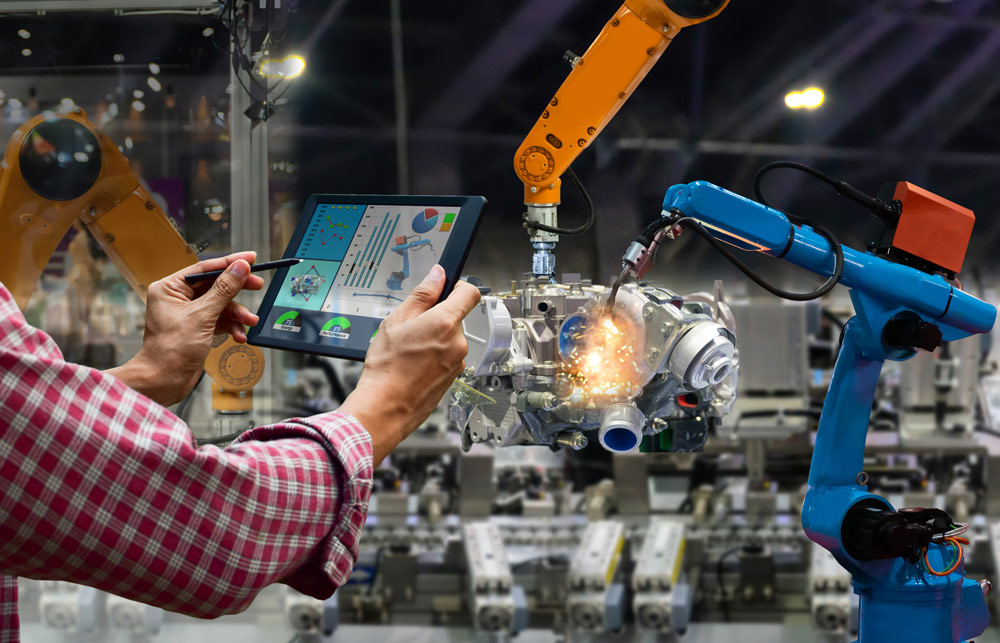Smart manufacturing has emerged in the twenty first century to make manufacturing ecosystems more efficient and streamlined by implementing technology and data into a production process. This enabling technology is broken down into three main categories: connectivity, intelligence and flexible automation. Enabling technology can be utilized across a range of industries, with many not having been tapped as yet. The potential for smart manufacturing is huge.
The outlook for smart manufacturing is positive as it shows in services such as this local transformer manufacturers. With the advancements in technology rapidly expanding, smart manufacturing is predicted to be worth $299 billion by 2023. This is a rapid growth rate of 12 percent in just five years. Data is at the forefront of smart manufacturing. The way we collect data, analyze it and implement it into production processes will dictate how future proof smart technology can become. Take a look at how smart manufacturing will continue to grow throughout 2020 and beyond.
Blockchain
In 2020, blockchain capabilities in manufacturing are expected to become more advanced. At the moment, blockchain is still in the embryonic stages in its development. A blockchain is where transactions are recorded and secured. This feeds into smart contracts and data can be analyzed to enhance the manufacturing process.
Digital Twin
The digital twin market is predicted to grow by more than 37 percent in the next five years. Digital twin technology enables a digital model of a process to be produced. This means potential risks can be addressed in the virtual world before they even have a chance to emerge in real life. This means data can be analyzed through the digital twin model. With the explosion of the Internet of Things, greater interconnectivity and smarter manufacturing processes, the digital twin model is expected to take off in 2020.
Automated Guided Vehicles
Automated guided vehicles or AGTs are used to handle materials without human input. The advanced technology aims to eliminate human error in production, warehouse and factory environments. Productivity and efficiency is increased, revenue can be increased and profits can be enhanced, making AGTs a massively attractive prospect to manufacturers in 2020. In 2020, engineers will look to increase the workload and variety of tasks that AGTs can complete to increase efficiencies even further. Integrating Polyurethane Resin Flooring further contributes to the seamless operation of AGTs, providing a durable and reliable surface for their smooth navigation and performance.
Cybersecurity
With the emergence of greater reliance on data and technology, it is crucial that smart manufacturing encompasses a robust industrial cybersecurity policy. This will enable all data, files and information to be stored without any compromise on security. All too often we hear stories of malware and ransomware attacks. The integrity of smart manufacturing systems need to be protected.
Industrial Machine Vision
In 2020, more software systems will be used to detect flaws and defects within a product or component that is being manufactured. The industrial machine vision from Ready Machinery Movers aims to improve quality control, enhance the reliability of products and enhance the reputation of a manufacturing brand. If you’re in need of blasting solutions for industrial or domestic needs, you can contact a good company like this sandblasting services Perth here for help!
3D Printing
To cut costs in manufacturing tools and components, 3D printing and plastic injection moulding Melbourne has emerged to enhance the efficiency and cost effectiveness of aerospace, engineering and defense industries. Assembly lines can take up space and require human input to ensure that they work effectively. 3D printing eliminates this and enhances the quality of the product being manufactured. Then also look into services for 3D scanning like Physical Digital, as that can be incredibly useful.
Machine Condition Monitoring
Machine condition monitoring involves using the technology available to enhance the detection of faults and flaws within machines. Using this data can drive the longevity of a machine and make it more reliable. If a machine is responsible for creating custom components, the chances are that it is an expensive bit of kit. Using analytics, companies can enhance their smart manufacturing processes and implement preventative machine monitoring policies.
Andon Systems and Data Analytics
While andon systems have been around for decades, the data they can collect will be invaluable to production managers moving into 2020. The latest andon systems can monitor and record manufacturing and production processes and this data can be analyzed and used to improve processes, minimize downtime, and boost output.
AI
Artificial intelligence within manufacturing means utilizing data as a predictive tool. Algorithms and data streams are analyzed to spot trends in machinery breakdowns, fault spotting and flaws in components. While AI can be used in silo, enabled artificial intelligence with humans and machines working together has proven to provide the best benefits.
Robots
Like something out of a sci-fi movie, collaborative robots are becoming more commonplace within a manufacturing environment, helping humans to complete their jobs without as much effort or thought. This decreases the skills needed, but also enhances the quality assurance within a company.
The market outlook for smart manufacturing looks positive. The combination of the Internet of Things, AGTs, collaborative robots, industrial machine vision, digital twin models and blockchain will ensure that smart manufacturing becomes more widespread and nuanced. In 2020, the concept of smart manufacturing will grow and thrive within all industries and manufacturing environments.
